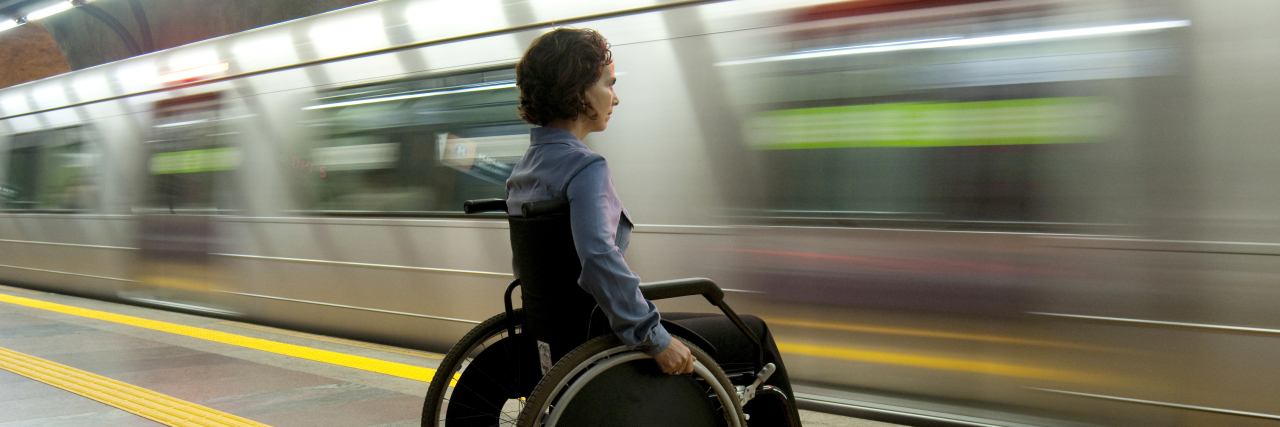Why Amtrak Isn’t Accessible For People With Disabilities
Sometimes the news isn’t as straightforward as it’s made to seem. Heidi Cope, The Mighty’s community associate, explains what to keep in mind if you see this topic or similar stories in your newsfeed. This is The Mighty Takeaway.
Amtrak, America’s passenger rail service, is in the news after charging $25,000 to accommodate two extra wheelchair-accessible seats for a fare that would normally cost around $16 a ticket.
The Americans With Disabilities Act (ADA) states “all public entities that provide public transportation, whether or not they receive federal financial assistance” must give accommodations for people with disabilities unless it puts an “undue burden” on the company to do so. Apparently, having a small group of wheelchair users request disability tickets in advance is considered an undue burden to the company. Although Amtrak has since withdrawn its earlier statements upholding the $25,000 tickets, it makes you wonder about how accessible Amtrak really is for passengers with disabilities.
When the ADA was enacted in 1990, Amtrak was given twenty years to upgrade their services to be accessible for all passengers. Despite the grace-period, passengers with disabilities still faced discrimination. In 2013, a class-action lawsuit was filed against Amtrak for not having wheelchair accessible stations.
In the same year, the National Disability Rights Network (NDRN) published a report on Amtrak’s failure to comply with the ADA, and its executive director, Curtis Decker, stated:
Does it really take more than 23 years to provide a ramp into a station with only stairs, provide and properly mark accessible parking and remodel inaccessible bathrooms and counters to make them accessible?
I ask myself the same question each time I ride Amtrak in North Carolina. Driving long distances can be difficult living with postural orthostatic tachycardia syndrome (POTS), a chronic illness that gives me varying levels of “invisible” physical disability. Since my diagnosis three years ago, I have taken Amtrak several times and experienced discrimination based on my disability or left the train with deep concerns after every ride.
In the newly remodeled Raleigh station, passengers have to walk with their luggage down a long incline before being able to access the elevator to the platform. While that might not seem inaccessible at first, I realized that on return, I’d have to walk back up the incline with my luggage. While the architects tried to remedy this situation with various rest points along the way, I couldn’t help but wonder why they wouldn’t put the elevator at the top of the incline in the first place. My solution? I get off at an earlier station and take a more expensive Uber home to avoid over-exertion, especially in summer.
As someone with an invisible disability, I’m not surprised that I face discrimination from strangers, yet it does concern me when transit employees appear to lack sensitivity training. Once at an Amtrak platform, a rail assistant refused to help me carry my luggage up the train steps. During my most recent ride, another assistant asked me to move from disability seating in a nearly empty train because “some people actually need these seats.”
Even though I’m not an ambulatory wheelchair user, I tend to check out wheelchair accessibility wherever I go. After being told to move from the disability seats, I noticed that there were spots for two wheelchair restraints in the food car. However, there was no bathroom in the food car, making me wonder how a wheelchair user can use the bathroom on a train if they were in the food car? They can’t.
It’s obvious Amtrak has a long way to go before being fully accessible for passengers with disabilities. It frustrates me that in a country that values diversity and inclusion, people with disabilities still have to advocate for their most basic accessibility rights.
Looking at how other countries address visible and invisible disability on transit may offer some solutions. In the U.K., Transport For London (TFL) introduced “please offer me a seat” badges, so that passengers with disabilities don’t have to explain why they need a seat. People with invisible disabilities might benefit most from a similar badge system in the U.S. However, it doesn’t help with the lack of structural accessibility on Amtrak. For that, Amtrak would still have to overhaul many of its trains and platforms, a project in which, unfortunately, the cost appears to be valued over the rights of passengers with disabilities.

